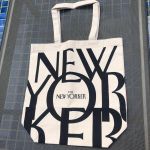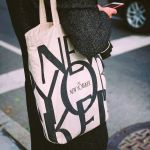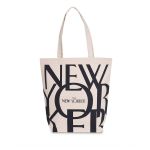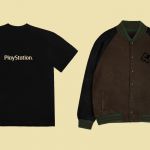
The New Yorker and the magazines' merch
The historic American magazine has now become a cult brand
November 27th, 2020
The New Yorker, the historic American magazine founded in 1925, has recently launched new items on its web store, which make up a real merch collection. Along with the classic prints with the reproduction of drawings and historic magazine covers, there are now T-shirts, hats, sweatshirts, socks, beanies, children's onesies, but also mugs, pencils, playing cards and notebooks, all decorated by the iconic logo of the publication. The new magazine's collection embodies all its fashion vocation, consisting of basic and simple items, alongside homeware objects designed for the most loyal readers.
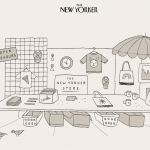
The idea of the merch was developed by Nicholas Blechman, creative director of the magazine, who said: "We want to involve the art that distinguishes our magazine in the project. We would like to ask cartoonists and illustrators what they would love to do", referring to the strong relationship that exists between the magazine and artists, illustrators, and cartoonists, an integral part of the publication.
The magazine has long boasted an e-commerce section on its website, where up until now posters and framed drawings of the covers of the most famous issues were on sale, but a real merch represents a novelty. This is an unprecedented move - but not totally unexpected - by the cult magazine, which has decided to monetize on its cult status, after the overwhelming success of the magazine's logo tote bag, made a couple of years ago.
According to a study carried out by Alliance for Auditel Media, 2020 saw a decline in audience and advertisement of about 40%, a decline that particularly affected fashion magazines, while publications dealing with politics, current events, culture and social issues have seen their audience grow. The New Yorker belongs to the latter case, and unlike other publications also belonging to the Condé Nast group, recorded an audience increase of 16% with web traffic growing by 23%. According to WWD reports, the paywall that The New Yorker introduced in 2014 brought the magazine about $120 million.
As has already happened in other industries and sectors, the pandemic has accelerated changes already underway. On the one hand, the content evolution that has affected The New Yorker in recent years, which has increasingly opened up to current events - such as police brutality, the elections and the pandemic - have met the taste and interests of readers, as also confirmed by the success of The Atlantic. On the other hand, the ineffectiveness of advertisements has forced newspapers and magazines to search for new ways of earning, a problem partially solved with the introduction of paywalls, with the creation of vertical newsletters dedicated to specific topics which you can subscribe to, or branded contents that mix the magazine's classic narrative with the client's needs.
In this context, therefore, the merch created by The New Yorker is a plus, a further affirmation of its fame and success, not a way to make up for budget problems. As demonstrated also by the success of the tote bag, a new audience of readers (and fashionistas) saw in the magazine's products a way to affirm their identity, their culture, their being hip. The New Yorker knows that it is now a brand, that it represents a cross-section of a very specific, cultured, informed, democratic public, who knows they are (or aspires to be) and loves to show it off. The magazine directed by David Remnick holds in itself an imaginary and a narrative that is in some ways aspirational, to which even those who have never read the magazine want to belong.
















































